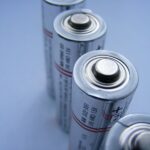For most, beer is the quintessential simple pleasure—a crisp, refreshing beverage enjoyed with friends after a long day or during a weekend celebration. It represents community, tradition, and craft. For the brewer, however, it is a masterpiece of biological and biochemical artistry, a carefully controlled sequence of transformations. But beneath the visible science of malt, hops, and yeast lies a deeper, often invisible, force that governs every single stage of the process: fluid dynamics. The journey from grain to glass is not merely a chemical transformation; it is a carefully choreographed dance of liquids, gases, and solids, all governed by the fundamental principles of how fluids move, mix, and interact.
Understanding these principles is what separates an experimental homebrew from a perfectly consistent, world-class commercial beer. It is the engineering backbone that allows for scaling a recipe from a 5-gallon carboy to a 500-hectoliter brewing tank without losing the essence of the beer. The fluid dynamics of brewing are the unsung hero, the invisible hand that ensures efficiency, quality, and the very sensory character of the beer in your hand. This is the story of the physics hidden within your pint.
The Mash: Mastering Flow Through a Porous Bed
The alchemical process of brewing begins with the mash, where milled grain (the “grist”) is mixed with hot water in a vessel called the “mash tun.” To a fluid dynamicist, this is not merely a mixture; it is a porous medium, a complex matrix of solid particles through which a liquid must travel. The hot water’s mission is to flow evenly through this bed of grain particles to efficiently extract the precious sugars, enzymes, and flavors that will become the foundation of the beer.
This stage presents the first major fluid dynamic challenge: the phenomenon of channeling. If the liquid (now called “wort”) finds a path of least resistance through the grain bed, it will create dedicated channels. This means the water flows rapidly through these open pathways while largely bypassing other, more densely packed areas of the grain. The consequence is a poor and uneven extraction. Some grains are over-extracted, leaching out harsh tannins and astringent compounds, while others are under-extracted, leaving valuable fermentable sugars and flavors trapped inside. The result is an inefficient process and a beer with an unbalanced, often unpleasant, profile.
Brewers combat this through meticulous management of flow rate during the recirculation step, known as “vorlauf.” By moving the wort slowly and gently from the bottom of the tun back to the top, they allow the grain bed itself to act as a natural filter. The particles settle into a uniform, permeable structure, creating a consistent pressure drop across the entire bed and ensuring every single grain particle is evenly rinsed. Agitating the bed too vigorously or pumping the liquid too quickly increases the pressure differential and can lead to “compaction,” a dreaded scenario where the grains pack so tightly that the liquid flow ceases entirely, bringing the brew day to a grinding halt. The mash, therefore, is a delicate balance between achieving optimal extraction and managing the physical constraints of flow through a porous material.
The Boil: Engineering Turbulence for Flavor and Clarity
Once the sugar-rich wort is separated from the spent grains in a process called lautering, it is transferred to the kettle for a vigorous boil. Here, the nature of the fluid dynamics shifts dramatically from a filtration problem to a intense heat and mass transfer challenge. The goal is no longer gentle percolation, but controlled chaos.
A robust, turbulent boil is non-negotiable for quality beer. Turbulence—the chaotic, swirling, and eddying motion of a fluid—is a powerful mixer. In the boiling kettle, this serves several critical, simultaneous purposes:
Even Heat Distribution: The high thermal load from the kettle’s heating elements or fire can easily scorch the wort, which is dense with sugars. Turbulence acts as a natural stirrer, constantly moving the wort from the bottom of the kettle to the top, preventing localized overheating and the creation of burnt, off-flavors.
Isomerization of Hops: The alpha acids found in hops, which provide beer’s characteristic bitterness, are not soluble in wort in their natural state. They must be isomerized—a process where their molecular structure is changed by heat. Turbulence ensures these hydrophobic compounds are constantly churned and brought into intimate contact with the heat source and distributed uniformly throughout the entire volume of wort, guaranteeing a consistent bitterness.
Evaporation and Drive-Off: The rolling action of a turbulent boil dramatically increases the surface area of the wort exposed to the atmosphere. This is essential for driving off volatile sulfur compounds, most notably dimethyl sulfide (DMS), which can impart a cooked-corn or cabbage-like aroma to the finished beer. The vigorous evaporation also serves to concentrate the wort to the brewer’s intended original gravity.
The very design of a modern brew kettle is an exercise in fluid dynamic engineering. The placement of heating elements, the shape of the kettle’s bottom, and even the use of internal calandrias (external or internal boilers) are all optimized to induce the perfect level of turbulence—enough to create a vigorous “rolling boil” that maximizes these benefits without causing a messy, energy-wasting boil-over.
The Whirlpool: The Elegance of Centrifugal Clarification
Following the boil, the wort is hot, bitter, and full of solid debris. This includes coagulated proteins (known as “trub” or “hot break”) and the insoluble matter from the hops. These solids must be removed before fermentation, as they can contribute off-flavors and haze. The solution is a brilliant application of rotational fluid mechanics: the whirlpool.
The principle is elegant in its simplicity. The wort is pumped at high velocity tangentially into a cylindrical vessel. This injection of momentum induces the entire body of liquid to spin, creating a stable, swirling vortex. This rotating flow generates a powerful centrifugal force that acts on every particle within the wort. The dense, solid particles (trub and hop matter) are thrown outward by this force toward the walls of the vessel. As they contact the wall, they lose momentum, slide down the slightly sloped bottom, and collect in a neat, compact cone at the very center.
The clarified wort, now brilliantly clear and free of the majority of its solids, remains in the outer region and can be cleanly drawn from an outlet port on the side of the vessel. The efficiency of this elegant separation is a direct function of vorticity—the strength and stability of the spin—and the settling velocity of the particles, a concept governed by Stokes’ law, which describes how particles move through a fluid medium.
Fermentation: The Living Two-Phase Flow
In the sanitized environment of the fermentation tank, the fluid dynamic story becomes a biological one, involving a complex two-phase flow of liquid and gas. As the yeast inoculum consumes the wort’s sugars, it produces two primary byproducts: ethanol and a massive volume of carbon dioxide (CO₂).
The release of CO₂ is far from a gentle process. Tiny bubbles of gas nucleate on the surface of the yeast cells and buoyantly rise through the liquid wort. This constant, effervescent bubbling is a powerful natural mixing force, creating convection currents that circulate the wort throughout the tank. This natural agitation is vital: it keeps the yeast cells in suspension, ensuring they have access to all available sugars; it promotes even temperature distribution, critical for healthy fermentation; and it helps to scrub out any remaining volatile compounds.
This stage also gives rise to the most visible sign of active fermentation: the “kräusen.” This thick, foamy head that crowns the fermenting beer is a complex colloidal structure. Its stability and behavior are a direct result of the interplay between surface tension, proteins from the malt, and the relentless upward flux of CO₂ bubbles. Managing the pressure and flow of gas during this phase is critical to prevent excessive strain on the tank and to control the beer’s final carbonation level.
Carbonation and Serving: The Physics of the Perfect Pour
The final act of fluid dynamics occurs at the moment of serving, right before the beer meets your lips. Carbonation is the process of dissolving CO₂ into the beer, a principle perfectly described by Henry’s Law. This law states that the amount of gas dissolved in a liquid is directly proportional to its partial pressure in the space above the liquid. In a sealed bottle or keg, a high pressure of CO₂ in the headspace forces the gas into solution within the beer.
When you crack open a bottle or tap a keg, you release that pressure. The sudden drop in pressure makes the dissolved CO₂ unstable, forcing it to come out of solution and form the countless tiny bubbles we see and feel. The formation of these bubbles is not random; it requires nucleation sites—microscopic imperfections, tiny scratches, or even specks of dust on the surface of the glass. Some breweries laser-etch their logo at the bottom of a glass; these tiny grooves provide a continuous stream of nucleation sites, producing a steady, effervescent plume of bubbles that enhances aroma release and helps maintain a creamy, persistent head.
Finally, the phenomenon of “beer tears” or “legs”—the rivulets that form on the inside of the glass after you take a sip—is a classic demonstration of the Marangoni effect. As the more volatile alcohol evaporates from the thin film of beer on the glass, the surface tension in that localized area increases. This difference in surface tension pulls liquid from areas of lower surface tension (more alcohol) toward areas of higher surface tension (less alcohol), causing the liquid to crawl upward. Eventually, gravity wins, pulling the accumulated liquid back down in a tear-like stream.
Conclusion: A Pint Shaped by Physics
From the gentle, controlled percolation through the mash to the violent, cleansing turbulence of the boil; from the elegant, centrifugal spin of the whirlpool to the lively, biological effervescence of fermentation; and finally, to the joyous release of carbonation in the glass—beer is a living testament to the beauty and power of applied physics. The next time you raise a pint, take a moment to appreciate not just the artistry of the malt and hops, but the invisible, powerful, and beautifully orchestrated dance of fluids that made it possible. In the world of brewing, a deep understanding of fluid dynamics isn’t just an academic exercise—it is the fundamental engineering that ensures every single drop is nothing short of perfect.















